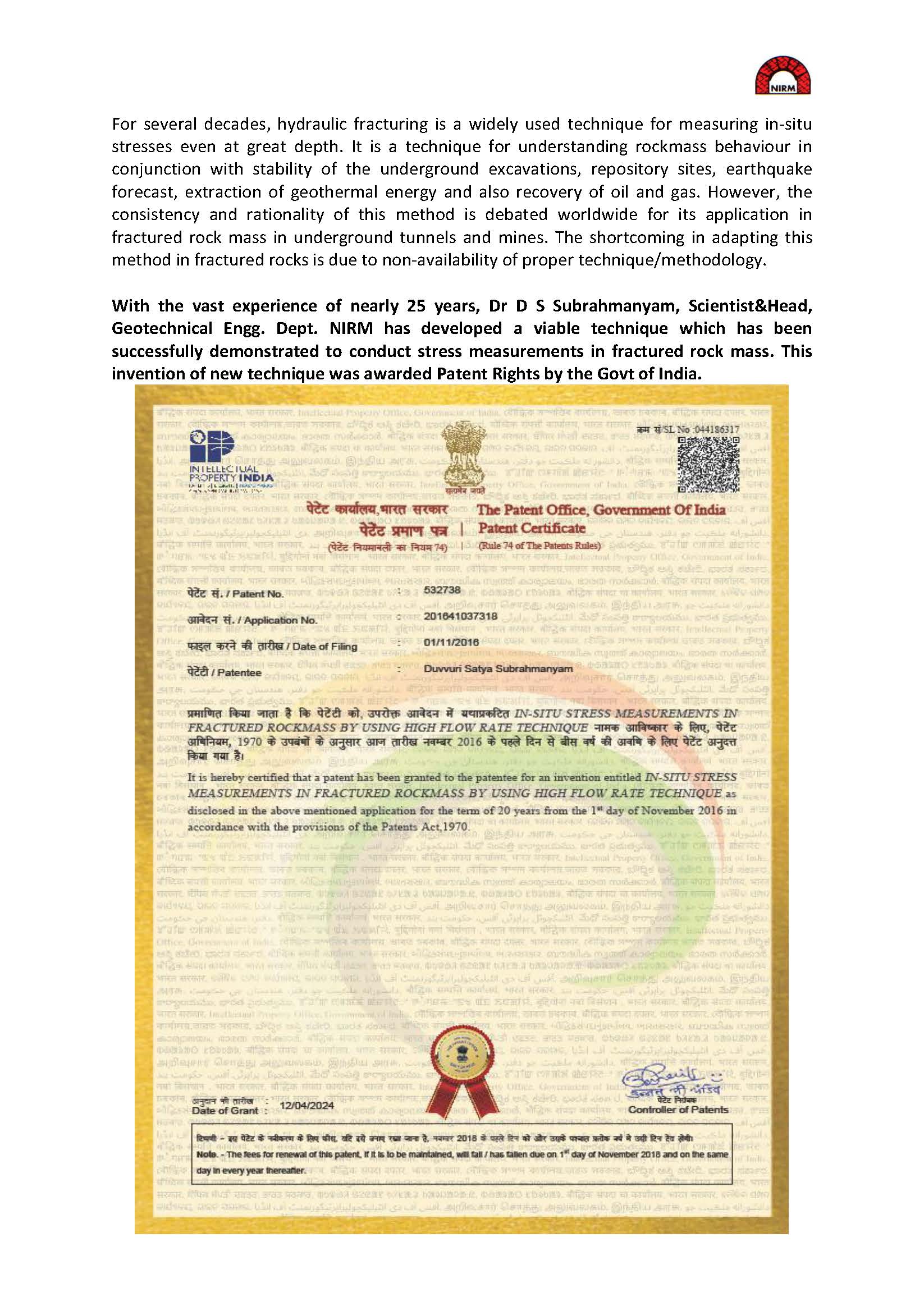Description of Invention:
There are various methods to determine in situ stress parameters, each having its own advantages and limitations. Among the methods available, the hydraulic fracturing method is the most adopted method for in situ stress measurements because of its simplicity, reliability. But the legitimacy of this method becomes questionable in fractured and porous rocks as the amount of experimental work has thus far been limited, especially in the case of its validity in fractured and porous rocks. The relatively slow rates of pressurisation have ensured that when fracture initiation occurs, the sudden increase in volume may lead to a marked drop in pressure in the fractured section, which is easily recognised from the pressure record. This is because, pressure cannot be developed if the rate of leakage in the formation is equal to or higher than the flow rate applied for fracture initiation. With this background, a series of hydraulic fracturing tests were performed on fractured and porous rock masses. The tests were conducted by using different flow rates of water inside the fractured rocks and correlated with normal flow rate method at the same locations where the rock mass was not fractured. The correction factor was introduced in the stress evaluation by hydraulic fracturing method in fractured rocks.









